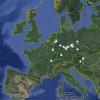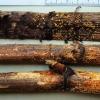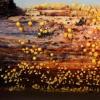
04-11-2025 12:43
 Edvin Johannesen
Edvin Johannesen
Hi! One more found on old Populus tremula log in O

04-11-2025 09:07
Hello.A suspected Hymenoscyphus sprouting on a thi

03-11-2025 21:34
 Edvin Johannesen
Edvin Johannesen
These tiny (0.4-0.5 mm diam.), whitish, short-stip

28-10-2025 15:37
Carl FarmerI'd be grateful for any suggestions for this strik

03-11-2025 16:30
 Hans-Otto Baral
Hans-Otto Baral
Hello I want to ask you if you have found this ye

28-10-2025 19:33
 Nicolas Suberbielle
Nicolas Suberbielle
Bonjour à tous,Je voudrais votre avis sur cette r

31-10-2025 09:19
 Lothar Krieglsteiner
Lothar Krieglsteiner
Can somebody provide me with a file of:Rogerson CT
Hymenoscyphus sachalinensis in southern Germany
Hans-Otto Baral,
21-08-2017 21:19
 Hi all
Hi allyesterday I finally found in my home village in Tübingen Hymenoscyphus sachalinensis alias H. aff. dearnessii in masses, it is my first personal collection. I did not expect that because over all the years I never saw it, although looking now and then on its substrate, dead stems of Reynoutria sachalinensis (or R. x bohemica, rarely R. japonica).
Here I add the most actual map of the (still not validly described) species, where you can see that large areas are without a record, to my knowledge. In case you have collected it in such an "empty" area, please do not hesitate and contact me.
The species is very frequent in the middle of Germany, and now I assume that it can perhaps be found all over central Europe. Certainly it is invasive, the question is only at what time it arrived at which place. The first known collections were made as late as 2001.
I also add some images of my collection. The species differs from H. scutula in the abundant growth of the bright yellow apothecia, distinctly longer spores (30-36) which are not really scutuloid because the asymmetry at the spore apex is lacking and therefore the upper setula inserted apically.
Zotto




